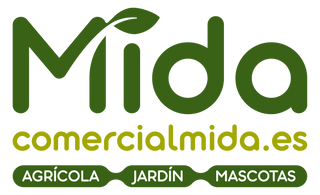pruning It is the work that is carried out in order to eliminate the living parts of the plant that may not be of our interest or do not benefit it.
Yes okthere are different types of pruning, which we will detail later, the general objectives of this work are the following:
-
shape the plant, for their benefit, and to adapt it to the needs of the producer.
-
delay aging of the plant, renewing its parts.
-
Try to balance the number of yolks, so that the production of wood can also occur.
The pruning system used will depend on the length that the pruner leaves the branch which will then carry the clusters. The length left is directly related to the number of buds (part of the plant in which the sprouting primordia of the first leaves and of all the clusters are located) that will remain.
We can distinguishthree pruning systems:
-
long pruning : in this system the pruning element is the charger (one-year-old shoot, but it is located on the two-year-old wood). The cut is made leaving from 4 to even 12 buds.
-
short pruning : The shoots are pruned only by the python (it is a one-year shoot). The shoots are lowered leaving 1 to 3 buds.
-
mixed pruning : both the python and the charger are present. The charger works as an element for fruiting and the python will provide the wood for the following year's pruning.
The type of pruning to be carried out will depend on its purpose and the time in which it is carried out.
According to the purpose, we find the following types:
-
formation pruning : it is carried out from the implantation and during the youth of the plant. This type of pruning will determine the structure that the plant will have throughout its cycle. Its purpose is to form the plant according to the conduction system chosen by the winegrower.
-
fruiting pruning : once the plant has been formed according to the chosen conduction system, the fruiting pruning is carried out. The objective is to select the best buds, which are well located (so that aeration and the arrival of light is good) and are fertile. Buds should also be selected to obtain replacement shoots, to avoid aging of the plant.
-
rejuvenation pruning : used in aged plants that show little vegetative growth and poor flowering. Old and unproductive parts are removed to give rise to new structures. By reducing the number of structures, all the nutrients reserved in the plant will be better used by the new parts, thus obtaining an invigorating effect. The biggest drawback of this pruning system is the large wounds it leaves. The rejuvenation pruning must be accompanied by a good fertilization.
-
conversion pruning : it is used to reconvert the varieties, making bud grafts.
Regarding the time of completion, we distinguish two types of pruning:
Pruning wintry (or dry): must be done after leaf fall and before the plant sprouts, while the phloem has no activity (vegetative rest).
In this type of pruning, wood of the year and wood of two or more years are removed. It is always recommended to start with the short-cycle varieties, continuing with the long-cycle varieties, and always pay attention to low temperatures.
For plants with good vigor, pruning can be done in the fall. However, for plants of medium vigor, or very weak plants, it is recommended to do it in winter, to ensure that all the reserves of the plant are found in the roots.
If we get too close to the beginning of spring to prune, budding can be affected (delayed), which can be beneficial for early flowering varieties located in areas where late frosts occur.
pruning in green : complements dry pruning and makes it easier. It is used to remove unwanted, misplaced canisters. It is carried out in the vegetative phase of the plant.


